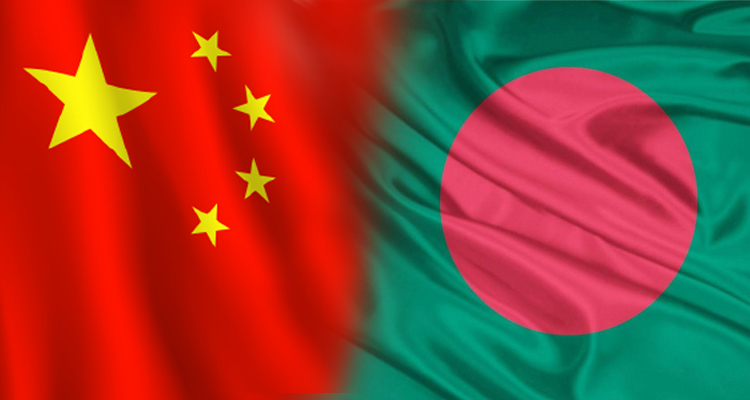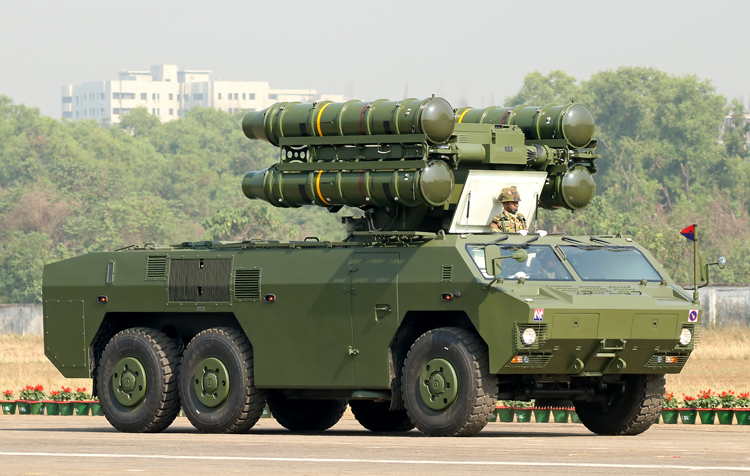It is presumed that the maintenance and overhaul facility being set up will double up as a production assembly line of the FM-90 air defence missile system and its advanced variants in future
 |
The Author is Former Director General of Information Systems and A Special Forces Veteran, Indian Army |

In December 2002, China and Bangladesh signed a bilateral ‘Defence Cooperation Agreement’ covering military training and defence production. According to Chinese government designations, Bangladesh and China are in "Strategic Partnership of Cooperation". Bangladesh is China’s second largest defence customer. The latest report of the Stockholm International Peace Research Institute (SIPRI) on arms sold during the period 2016-2020 says that Bangladesh procured some 17 per cent of all Chinese defence exports while Pakistan was the top customer procuring 38 per cent of Chinese defence exports. Beijing is the fifth largest exporter of arms and weapons accounting for some 5.2 per cent of all global arms sales.
The Bangladesh Army, Navy and Air Force are equipped with Chinese tanks, Chinese frigates and Chinese fighter jets respectively. In 2006, China sold 65 large calibre artillery systems, 16 combat aircraft and 114 missiles and related equipment to Bangladesh in 2006. In 2008, China assisted Bangladesh in setting up an anti-ship missile launch pad near the Chittagong Port and a maiden missile test was conducted in the same year on May 12 with active participation of Chinese experts.
Bangladesh is China’s second largest defence customer. The latest report of SIPRI on arms sold during the period 2016-2020 says that Bangladesh procured some 17 per cent of all Chinese defence exports
The anti-ship missile successfully test-fired was the C-802A with a strike range of 120 km. The C-802A missile is a modified version of Chinese Ying Ji-808 with weight reduced from 815 kg to 715 kg to increase the strike range from 42 km to 120 km. The missile was fired from the frigate BNS Osman, which is a 1500-tonne Chinese built Jianghu class frigate commissioned in 1989.
Many countries have and continue to suffer because of China’s low quality defence products. Nepal Airlines have had to ground all its six planes procured from China. Myanmar and Bangladesh are also concerned about the poor quality of Chinese-made military equipment. China gifted two 1970s-era Ming class Type 035G submarines to Bangladesh valued at $100 million each in 2017, which were re-inducted as BNS Nobojatra and BNS Joyjatra. Both the submarines are lying idle due to technical issues. Similarly, China gave two Chinese 053H3 Frigates to Bangladesh in 2020 – BNS Umar Farooq and BNS Abu Ubaidah. But these ships too have been encountering problems like non-functioning navigation radars and gun systems.

Bangladesh Army FM-90 Crotale SAM
News reports of February 19, 2022, have now revealed that China is to set up a missile repair base in Bangladesh. The Bangladesh Army, Navy and Air Forces are equipped with the FM-90 air defence missile system. The truck mounted FM-90 system is an improved version of the “Hong Qi”, a missile first produced by the China National Precision Machinery Import and Export (CNPMIEC) in 1998. These were supplied to Bangladesh in 2011.
The Bangladesh Army, Navy and Air Forces are equipped with the Chinese FM-90 air defence missile system. These were supplied to Bangladesh in 2011.
The FM-90 is an anti-aircraft system capable of all-weather operations against flying objects like aircraft, missiles or drones. The system can operate against multiple targets. It has a 25-km range radar and is capable of launching simultaneous offensive against multiple targets, which includes ability to hit ultra-low-altitude cruise missiles, air-to-surface missiles and anti-radiation missiles at a distance of more than 16 km. China’s Peoples’ Liberation Army (PLA) also hold the FM-90 air defence missile system in its inventory.
Setting up the missile repair base in Bangladesh for the FM-90 air defence missile system more than a decade after China supplied these in 2011 indicates that the systems are facing problems of serviceability. Chinese firm ‘Vanguard’ has been selected as the partner for the maintenance facility to be set up in Bangladesh for FM-90 missile systems. It is presumed that the maintenance and overhaul facility being set up will double up as a production assembly line of the FM-90 air defence missile system and its advanced variants in future.The FM-90 is among the clutch of Chinese military-related investments and supplies to Bangladesh that includes warships, naval guns anti-ship missiles and surface-to-air missile systems.

Bangladesh Navy on Monday (14-11-2016) received two Chinese submarines at a function held at Liao Nan Shipyard in Liaoning province’s Dalian city.
Both Bangladesh and China are members of the Bangladesh-China-India-Myanmar Forum for Regional Cooperation (BCIM). China has sought to cultivate and deepen commercial ties with many global players, including Bangladesh. China's economic and defence diplomacy surrounds Bangladesh. China's gross investment in Bangladesh amounted to only $122.54 million in 2020. However, now China has stepped up its huge infrastructure investments in Bangladesh worth $10 billion. In addition to being Dhaka's largest investor, China also agreed to allow duty-free access to 97 per cent of Bangladeshi products in late 2020. Bangladesh is the second-largest recipient of Chinese loans under BRI in South Asia after Pakistan. China invested over $60 billion as part of the China Pakistan Economic Corridor (CPEC).
China has stepped up its huge infrastructure investments in Bangladesh worth $10 billion. Bangladesh is the second-largest recipient of Chinese loans under BRI in South Asia after Pakistan.
India’s contribution in the Liberation of Bangladesh has been immense; and after the liberation, India forces reverted as soon as possible. As such, Bangladesh faces no threat from India even though it is surrounded on three sides by India, while the fourth side is the Bay of Bengal. But China must be using this excuse for selling military equipment to Bangladesh; and have some PLA presence there in the garb of civilian mangers, technicians and workers in various projects – defence related or others.
PLA is already present in Pakistan in the CPEC associated projects. Same will happen in Myanmar once the China-Myanmar Economic Corridor (CMEC) comes through. Sri Lanka and Nepal are being debt-trapped by China and in Bhutan PLA continues to make more encroachments in addition to occupying the Doklam Plateau. By drawing Bangladesh into its sphere of influence, China wants to complete the noose around India.












